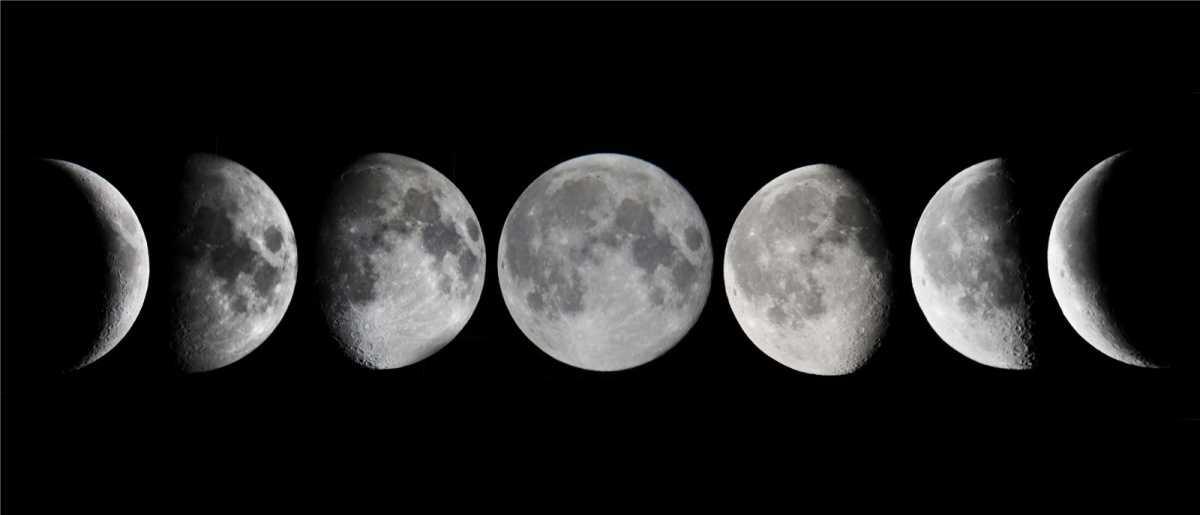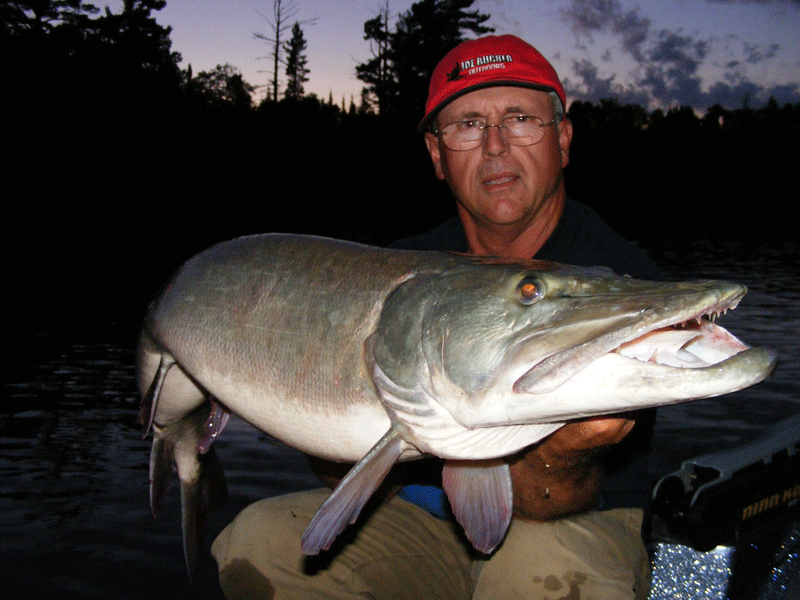THE MOON MUSKIES : Understanding Moon Phase Data
I learned early on in my fishing career as a full time musky guide that specific moon phases each month really improved odds in all facets of the sport, but particularly in the big fish category. Specifically, big fish seemed to show up more often during the right moon phases.
Of course, my research on the moon and muskies is now well documented thru the pages of various fishing books, magazines, and my TV show over the past two decades. In fact, I now even have my own monthly moon charts published both in print and on-line (Joe Bucher’s Moon Secrets). I am definitely a true believer in the power of the moon and its effect on musky feeding habits.
Inside this article, is a review of the most important aspects of how the moon effects musky movements. In a nutshell, my evidence suggests trophy class fish are simply much more susceptible during a three to five day period surrounding the peak moon phases, full moon and new moon, on any given month.
I am not saying that muskies are only catchable during monthly moon peaks. This would be misleading. Plenty of muskies are still caught outside moon peaks each and every season. However, I am convinced more big muskies are on the move during a monthly moon peak; particularly when good weather patterns coincide with a peak moon phase. Following is the inside scoop on how to take full advantage of the moon before you plan your next trip.
MOON RISE & MOON SET/MOON UP & MOON DOWN
On any given 24 hour period, I contend that muskies do most of their feeding for a brief period right before moon rise and just after moon set. It mattersverylittleinregardstotimeofdayorphaseofthemoon. Thedailyrise and set of the moon simply triggers muskies to feed. When there’s a good weather pattern during one of these moon rises or sets, a more pronounced feeding spree is likely occur. When the weather is only fair, the feeding window is generally much smaller.
The daily period when the moon is up in the sky, or moon up, and its reverse, moon down are also important to understand. In a nutshell, my experiences suggest the hours during moon down are far more productive than moon up. For example, if the moon sets at mid morning and rises just after dark, daytime fishing should be hot. Night fishing should be poor. Conversely, a moon up overhead -- high in the sky throughout daylight hours – results in a real strong "night bite".
NEW MOON VS. FULL MOON
Some very strong differences exist in fishing opportunities between the dark or new moon and the full moon. Most notably, there are far larger feeding windows during the dark or new moon period. I am not really certain why this is, but it appears to be a fact. The feeding is usually very intense but short lived during a full moon. Musky movements are generally less intense, but prolonged during a new moon.
The highest potential times for a big fish to hit each day still exist during the daily moon rise and set – no matter what the phase. ALWAYS time your fishing around the best big fish spots during this predictable daily time period. You have nothing to lose by doing so, and everything to gain.
Above all, understand that you have far longer fish catching opportunities (feeding windows) during the dark/new moon versus its counterpart. Muskies do feed for much longer periods of time during both day and night during the dark/new moon. That is why three days + or - the peak of the new/dark moon are my absolute top rated times to fish each and every month of the year. It's a time when you should sleep very little, and fish very hard.
LET THE MOON PLAN YOUR TRIPS
One of the things I like to do most during the winter months is layout my fishing plans for the upcoming season and try to predict beforehand what will be the best fishing days of the year. Without question, old Mother Nature occasionally throws a wrench into the best laid plans, and negates the overall potential of any single date. A severe cold front can destroy a good moon peak. A warming trend can make it even better.
Finally, remember to pay close attention to the daily moon rise and moon set along with any local weather factors to help put you on top of the best spots at the very best times each day. Also, don't forget about sunrise and sunset either. It's no secret that they're high potential times during any given 24 hour period. Whenever conditions match up correctly, there's a special significance between the hours of sunset and moon rise; especially when you have three separate changes taking place in such a brief period of time: 1) sunset, 2) full darkness, and then 3) moon rise. The same thing occurs very early in the morning before dawn when you get: 1) moon set, 2) dawn, and then 3) sunrise.
The absolute ultimate big fish trigger happens when a 4th factor coincides with these three -- a drastic local weather change. I want to be on a proven big fish spot, working a favorite lure, when I hear the thunder rumbling in the distance, and I know a moon rise or set is less than an hour away. My level of confidence absolutely soars in a situation like this. I know the potential to bag a big one is at the “red level”.
So there you have it – a simple breakdown on how to take full advantage of monthly moon phases when planning your fishing trips. When it’s all said and done, I am convinced that more big fish are active during a monthly moon peak. When given a choice, I will always plan fishing trips to my favorite trophy waters during a full or new moon peak. I’d highly suggest you do the same.



